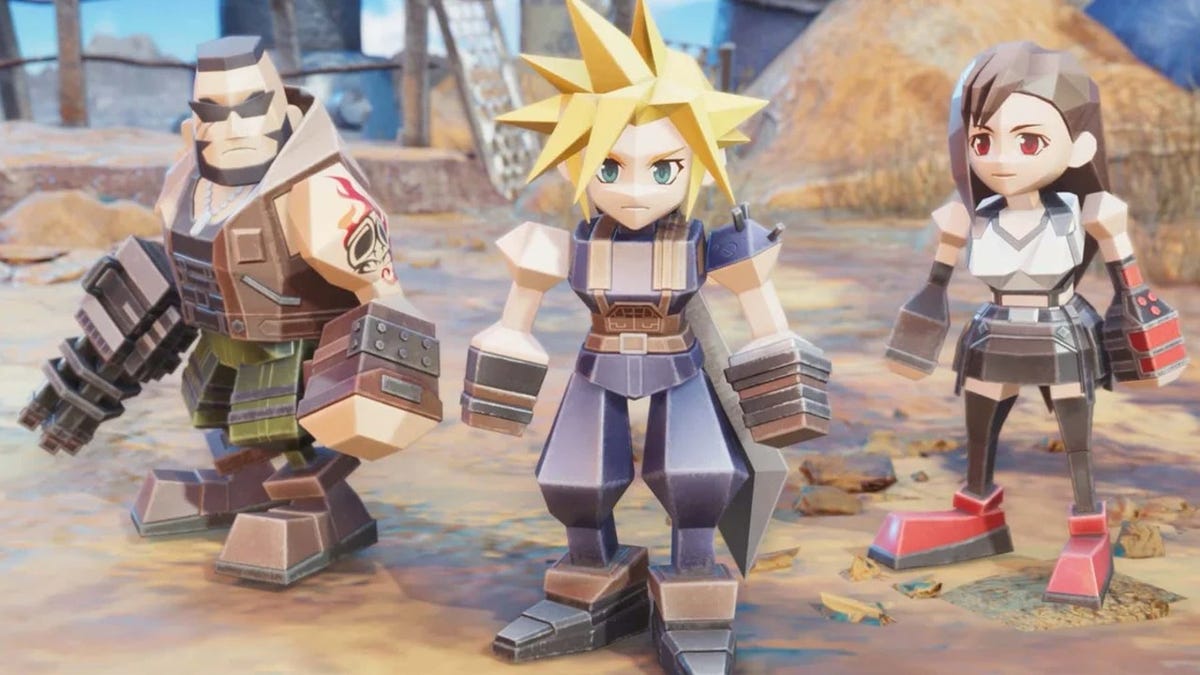Final Fantasy VII has always been an extremely weird game, from the impromptu snowboarding excursion to fighting a Triceratops fused with a truck. That sense of weirdness seeps into every aspect of the game and often rears its head as a strange—and, more often than not, janky—minigame. The 1997 game takes a “throw everything at the wall” approach and, remarkably, most of it works. Better still, Final Fantasy VII Rebirth manages to perfectly recapture that abrasive, shotgun-blast approach to its side content. Rebirth is massive and often a little messy, but that’s exactly what gives it so much personality.
The word “jank” isn’t always used in a negative light. It can also describe something with a certain unrefined charm. That idea matches FF7 to a tee, where every few hours of gameplay introduces something new. Get to Junon and you have to play a CPR minigame, followed by a Dolphin-jumping minigame, followed by the parade minigame. Straight after a life-altering tragedy, one of the first things you do is go snowboarding. That’s not even to mention that all of these minigames use different mechanics and control schemes. That frantic variety gives FF7 so much personality. Even the frustrating minigames (like the dolphin jump) contribute to that, with each separate piece adding up to a larger whole.
Buy Final Fantasy VII Rebirth: Amazon | Best Buy | Target

This same idea can apply to the game’s narrative, which weaves together ambitious themes in a way that wasn’t all that common in 1997, touching on topics like environmentalism, dystopian government, trauma, and identity crisis. A lot is happening tonally in FF7, but it somehow manages to cohere into something unforgettable.
That’s despite some of the major plot beats coming together at the last minute, according to its creators. For example, in a 2009 interview marking the 10th anniversary of FF7, director Yoshinori Kitase says, “I didn’t know until we were in the latter stages of development that Cloud’s memories were Zack’s.”
These disparate pieces flowing together are at the heart of Rebirth’s design, and it’s the single most gratifying way the game emulates the spirit of the original. It’s an approach that may not appeal to everyone, but this is a game that ensures its players constantly have something new to do.

Nearly every chapter in Rebirth introduces some kind of new idea, minigame, or mechanic. As the main story pushes forward, you keep seeing more unique elements. Playing as Cait Sith gives you a mechanic for throwing boxes, another side quest makes you pull the edges of a mushroom in the proper order, and The Gold Saucer gives you access to a plethora of minigame distractions, and many of these have their own variations to unlock. Then there’s the Queen’s Blood card game, which feels like it’s an entirely separate game in its own right. With modern games often feeling so homogenous, it feels exceedingly rare to see one as big and splashy as Rebirth take so many chances.
There’s a legitimate argument to be made on how all these distractions can hurt the pacing of the main story, and such a minigame-focused experience may not appeal to everyone. But despite that, Rebirth feels like the gutsiest game the series has seen in decades, and that’s the perfect encapsulation of why FF7 was so memorable to begin with.
.

